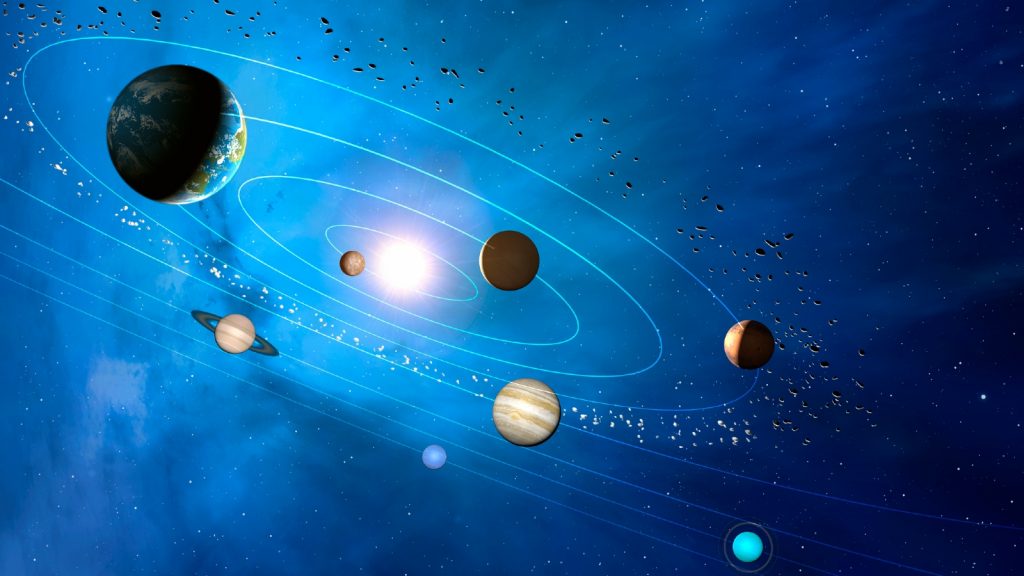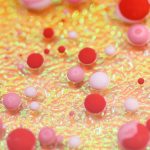Exploring the Wonders of the Solar System
The solar system is a fascinating cosmic neighborhood that has captivated human curiosity for centuries. It is a complex and dynamic system of celestial objects bound together by the gravitational pull of the Sun. Comprising the Sun, planets, moons, asteroids, comets, and various other celestial phenomena, the solar system provides insights into the origins and mechanics of the universe.
The Heart of the Solar System: The Sun:
At the center of the solar system lies the Sun, a massive, glowing ball of hot plasma that accounts for 99.86% of the system’s total mass. The Sun’s gravity keeps all the other celestial bodies in orbit. It serves as the primary source of energy, driving processes such as photosynthesis on Earth and influencing planetary climates.
Key facts about the Sun:
- Diameter: Approximately 1.4 million kilometers.
- Composition: Primarily hydrogen (about 74%) and helium (about 24%).
- Energy Source: Nuclear fusion, where hydrogen atoms combine to form helium, releasing vast amounts of energy.
The Planets: Diverse Worlds:
The solar system consists of eight planets, each unique in its composition, size, and characteristics. They are divided into two categories:
- Terrestrial Planets: Mercury, Venus, Earth, and Mars. These are rocky planets with solid surfaces.
- Gas Giants and Ice Giants: Jupiter and Saturn are gas giants, while Uranus and Neptune are ice giants, characterized by their thick atmospheres and icy compositions.
Inner Planets
- Mercury: The smallest planet and closest to the Sun, known for extreme temperatures.
- Venus: Similar in size to Earth but with a toxic atmosphere and scorching temperatures.
- Earth: The only planet known to support life, with a balanced climate and abundant water.
- Mars: Known as the “Red Planet,” it intrigues scientists with its potential for past or present life.
Outer Planets
- Jupiter: The largest planet, famous for its Great Red Spot, a massive storm.
- Saturn: Renowned for its stunning ring system made of ice and rock particles.
- Uranus: A unique planet that rotates on its side, with a bluish hue due to methane in its atmosphere.
- Neptune: The farthest planet, known for its deep blue color and supersonic winds.
Moons, Asteroids, and Comets:
- Moons: Many planets have moons that orbit them. For example, Earth has one moon, while Jupiter has 92 known moons, including Ganymede, the largest in the solar system.
- Asteroids: Found primarily in the asteroid belt between Mars and Jupiter, these rocky remnants provide clues to the solar system’s formation.
- Comets: Icy bodies that develop bright tails when they approach the Sun, originating from regions like the Kuiper Belt and Oort Cloud.
The Kuiper Belt and Oort Cloud:
Beyond Neptune lies the Kuiper Belt, a region of icy bodies and dwarf planets like Pluto. Farther still, the Oort Cloud is a theoretical shell of icy objects surrounding the solar system, believed to be the source of long-period comets.
Exploration of the Solar System:
Space exploration has significantly expanded our understanding of the solar system. Missions like NASA’s Voyager spacecraft, the Mars rovers, and telescopes such as the Hubble Space Telescope have revealed detailed images and data about distant planets and moons.
Upcoming missions, like the Artemis program aimed at returning humans to the Moon and plans to explore Mars, promise to uncover even more about our cosmic surroundings.
Conclusion:
The solar system is a remarkable blend of science and wonder. From the fiery heart of the Sun to the icy edges of the Kuiper Belt, it embodies the diversity and complexity of the universe. As we continue to explore and study its many components, the solar system not only deepens our understanding of the cosmos but also inspires us to dream beyond the stars.


